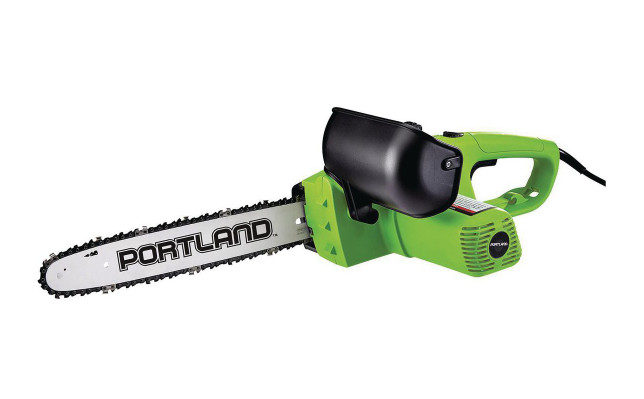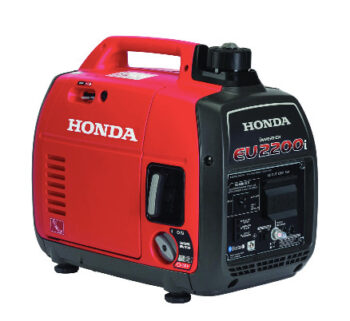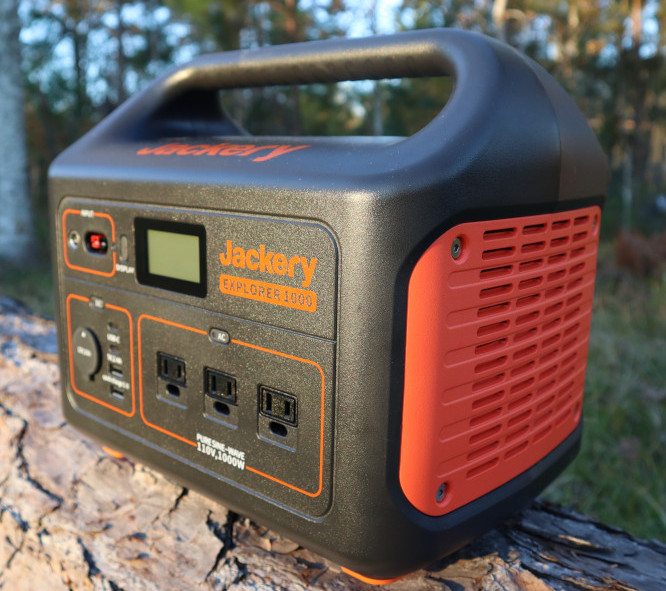When we first started clearing out our property on the creek we didn’t think we’d need a large chainsaw, so we made a visit to our local Harbor Freight and found a very reasonable priced electric chainsaw. We don’t have electricity at the creek, but we do have a very useful Honda EU2200i generator, so we were confident it could provide the power we needed. You’ll see that our Portland 14″ Electric Chainsaw review showed it was more than up to the task!
5 Reasons to Use an Electric Chainsaw:
- Convenience: Electric chainsaws are generally lighter and easier to handle than gas-powered chainsaws, making them a popular choice for homeowners who need to tackle small to medium-sized cutting jobs around their yard or garden.
- Low Maintenance: Electric chainsaws don’t require as much maintenance as gas-powered chainsaws since they don’t have an engine that requires oil changes, spark plug replacements, or carburetor adjustments. They also produce fewer emissions, making them an eco-friendly option.
- Cost-Effective: Electric chainsaws are generally more affordable than gas-powered chainsaws, and they also have lower operating costs since they don’t require gas or oil to operate.
- Low Noise: Electric chainsaws produce significantly less noise than gas-powered chainsaws, which is an important consideration for people who live in residential areas or work in noise-sensitive environments.
- Safety: Electric chainsaws are generally considered safer than gas-powered chainsaws since they have a built-in safety feature that stops the chain from moving if the operator’s hand slips off the trigger. They also don’t emit harmful fumes, making them safer to use indoors.
How an Electric Chainsaw Works:
Electric chainsaws are powered by electricity from a power outlet or a battery. They work by converting electrical energy into mechanical energy that drives the saw chain around the guide bar to cut through wood. Here’s how the process works:
- Power Source: The power source for an electric chainsaw can be a power outlet or a battery. If it’s plugged into a power outlet, the saw will be directly connected to an electrical current. If it’s powered by a battery, the battery will need to be charged before use.
- Motor: The electric motor is the heart of the chainsaw, and it converts the electrical energy from the power source into mechanical energy that drives the saw chain around the guide bar. The motor is usually located at the rear of the chainsaw.
- Chain and Bar: The chain and bar are the cutting components of the chainsaw. The chain is made up of a series of sharp teeth that rotate around the guide bar, which is the long, narrow bar that the chain wraps around. The guide bar is typically located at the front of the chainsaw and is attached to the motor.
- Trigger: The trigger is the on/off switch for the chainsaw, and it’s usually located on the handle of the chainsaw. When the trigger is pulled, it activates the motor, which in turn drives the chain around the guide bar.
- Safety Features: Electric chainsaws typically have safety features to prevent accidents. One common safety feature is a chain brake, which stops the chain from moving if the operator’s hand slips off the trigger. Another safety feature is a chain catcher, which prevents the chain from flying off the guide bar in the event of a broken chain. Some electric chainsaws also have anti-vibration features to reduce operator fatigue.
Overall, an electric chainsaw is a useful tool for a variety of cutting tasks, and it’s generally easier to operate and maintain than a gas-powered chainsaw. However, it’s important to follow safety precautions and manufacturer instructions when using any power tool, including an electric chainsaw.




